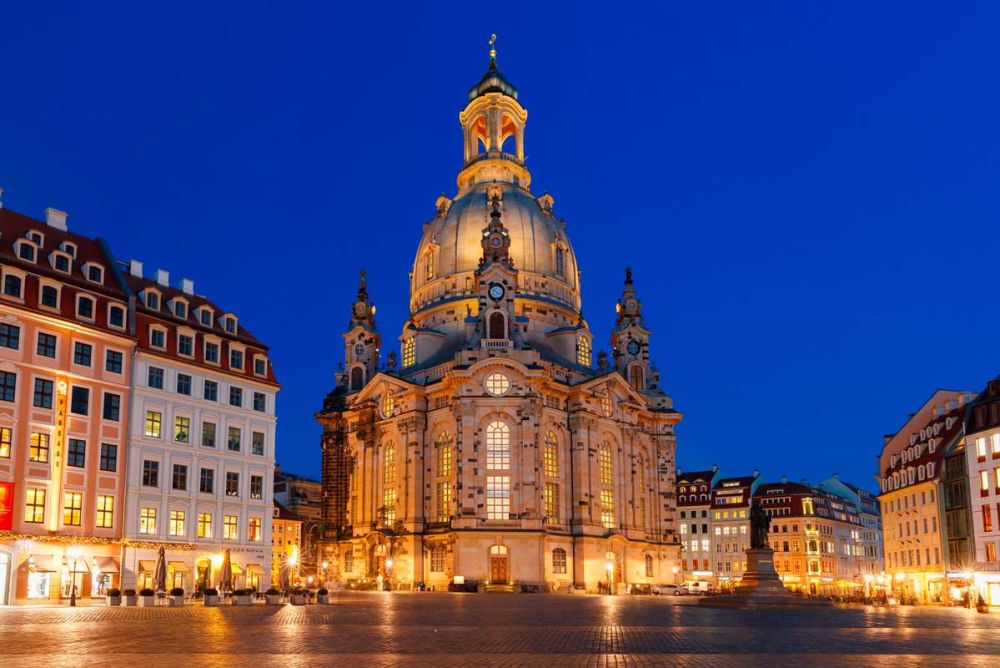

The Dresden Frauenkirche (Church of Our Lady) is not only an outstanding architectural masterpiece but also a poignant symbol of peace and reconciliation. Its significance in the realm of tourism is deeply connected to its tumultuous history, architectural splendor, and cultural importance.
The Dresden Frauenkirche had its inception during the Baroque period in the 18th century, with the original church construction being completed in 1743. Designed by the renowned architect George Bähr, the church boasted one of the largest dome structures in Europe, only to be overshadowed by St. Peter's Basilica in Rome and St. Paul's Cathedral in London. It stood as a testament to Protestant sacred architecture and was admired for its grandeur and beauty.
However, during World War II, allied bombing raids in 1945 devastated the city of Dresden, and the Frauenkirche collapsed after a firestorm, leaving it in ruins. It was not until after the reunification of Germany in 1990 that the decision was made to painstakingly rebuild the church using original plans and, wherever possible, the original stone.
The reconstruction of the Frauenkirche became a symbol of international cooperation and reconciliation. The edifice rose once again, being consecrated in 2005, as a beacon of hope, and drawing visitors from all over the world. Tourism in Dresden saw a significant increase with the reopening of the Frauenkirche, and it became an essential stop for visitors interested in history, architecture, and the story of Dresden’s rise from the ashes.
Heritage and Memory Tourism: Tourists are drawn to the Frauenkirche not only for its baroque beauty but as a place to reflect on the impacts of war and the power of peace. This form of tourism is increasingly popular among visitors who are interested in the cultural and historical contexts of the destinations they explore.
Architectural Tourism: The church is a masterpiece of Baroque architecture, and it attracts architectural buffs interested in its design, the engineering behind its impressive dome, and its restoration process.
Cultural and Spiritual Tourism: Dresden Frauenkirche hosts a variety of concerts, services, and events throughout the year. It not only functions as a church with regular worship services but also as a cultural hub, celebrating music, particularly the works of Bach, who was closely associated with the region.
Sustainable Tourism: Dresden, as a city, emphasizes sustainable tourism, encouraging visitors to explore its attractions responsibly. The Frauenkirche's restoration itself is an example of sustainable rebuilding and conservation, which adds to the city's overarching goals for sustainability.
Visitors can enjoy guided tours of the church, climb to the viewing platform of the dome for panoramic views of Dresden, or attend one of the many religious and cultural events held at the site. The Frauenkirche’s importance to the Dresden landscape cannot be overstated, and it stands today as a powerful testament to the city’s past and present, continuing to inspire and move its visitors.
The Dresden Frauenkirche remains a central figure in the historical and cultural landscape of Dresden, Germany. Its resurrection has elevated the city’s profile as a premier tourist destination, offering powerful lessons in history, resilience, and hope. Whether visitors are drawn by its baroque architecture, its spiritual significance, or its remarkable history of destruction and rebirth, the Frauenkirche awaits with open doors, a testament to the enduring human spirit.